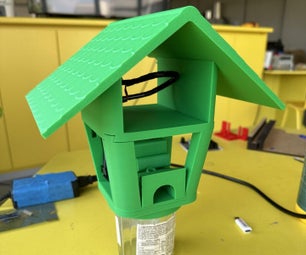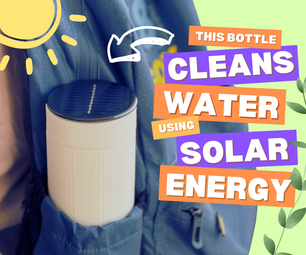Introduction: Five Neat Little Projects
Got to love circuits that flash and make noises when you are showing electronics to young people. These five circuits that take just a few minutes to build, they are easy to modify in order to change the flashing speeds or on times.
The first circuit is a little different and a fun treat but first to parts.
Supplies
Parts and Supplies
I have a few extra parts like capacitors just to change the speeds of the flashers and the on times.
3 x 100 Ω
1 x 330 Ω
2 x 470 Ω
3 x 10 KΩ
1 x 1 MΩ
1 x 1 KΩ pot
2 x 0.01 uF
2 x 0.1 uF
2 x 1 uF
2 x 100 uF
2 x 1000 uF
4 x BC547
1 x BC557
2 x 2N3904
1 x Chip RGB LED
4 x LEDs Any Color
1 x Momentary Button Switch
1 x Piezo Buzzer
Batteries or an adjustable power supply.
9 Volt Battery
9 Volt Battery Holder
3 x AA 1.2 Volt Rechargeable Batteries
1 x 3 x AA Battery older Bread Boards
If you make permanent circuits you will need prototype boards, a soldering iron, solder, and cutters, to remove excess leads.
Step 1: Beeping RGB LED
This first circuit is a real neat circuit, it uses the changing current of the chip RGB LED to make the piezo buzzer buzz with different tones as the LED changes color.
Parts
1 x chip RGB LED
1 x Piezo buzzer
1 x BC547 transistor
1 x 100 Ω
1 x 330 Ω
9 volt battery and holder Wire and bread board.
Step 2: Delay Circuit
This circuit will keep the LED on until the capacitor losses its charge. With this circuit I could change the brightness and the on time with different valued capacitors, resistors, and transistors.
Parts
1 x 100 Ω
1 x 10 KΩ
1 x 1000 uF
1 x 2N3904
1 x LED Any Color
1 x Momentary Button Switch
3 x AA 1.2 Volt Rechargeable Batteries
1 x 3 x AA Battery older Bread Boards
Step 3: Dimmer Circuit
This is a nice little circuit to demonstrate controlling an LED with a pot and a transistor.
Parts
1 x 100 Ω
1 x 2N3904 transistor
1 x 1 KΩ pot
1 x LED Any Color
9 volt battery and holder Wire and bread board.
Step 4: Flasher
This circuit is very forgiving and east to change the speed of the flashing by changing the value of the capacitor.
Parts
1 x BC547
1 x BC557
1 x LED Any Color
1 x 1 uF
1 x 1 MΩ
9 volt battery and holder Wire and bread board.
Step 5: Flip Flop Flasher
This is a very forgiving circuit; you can put the capacitors in backwards and the circuit works, you can also change the flashing speed by changing the capacitor values.
Parts
2 x 470 Ω
2 x 10 KΩ
2 x 100 uF
2 x BC547
2 x LED Any Color
9 volt battery and holder Wire and bread board.
Step 6: The Circuits in Action
Here is a video just so you can see the circuits in action.

Participated in the
1 Hour Challenge











